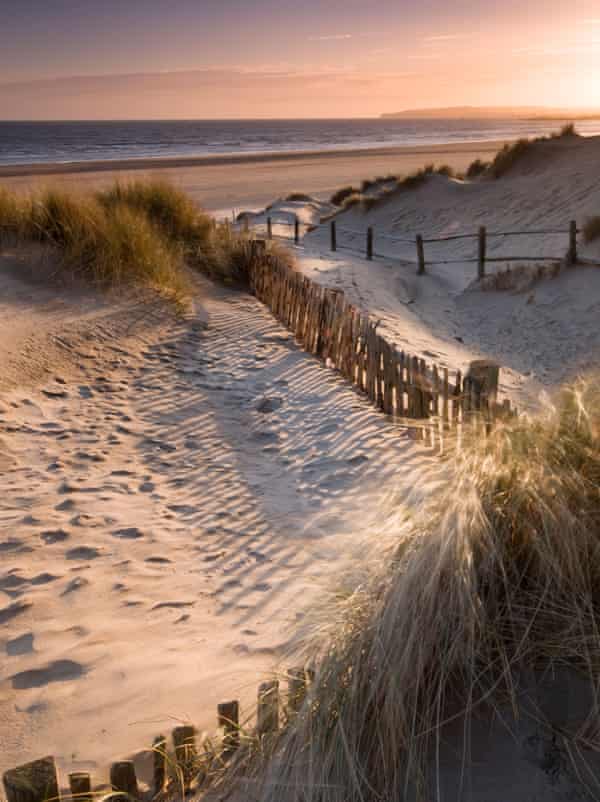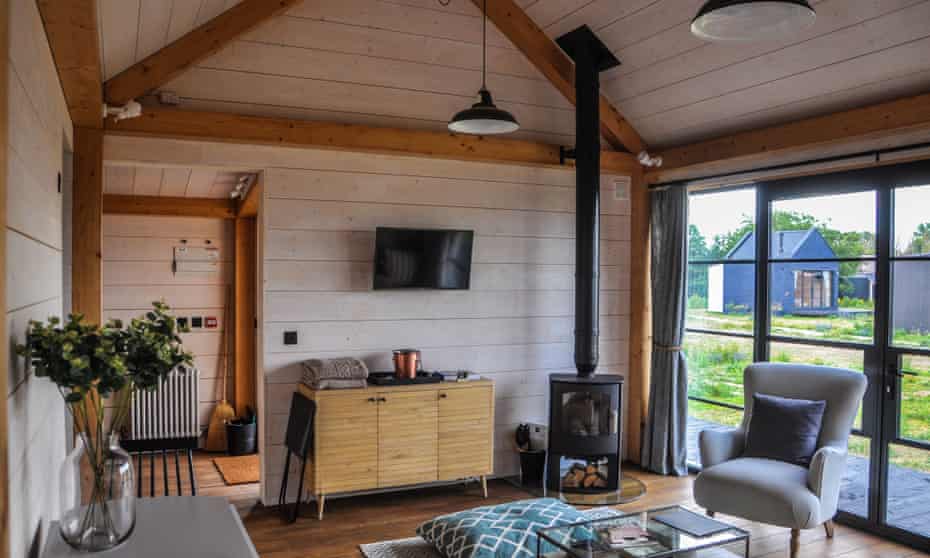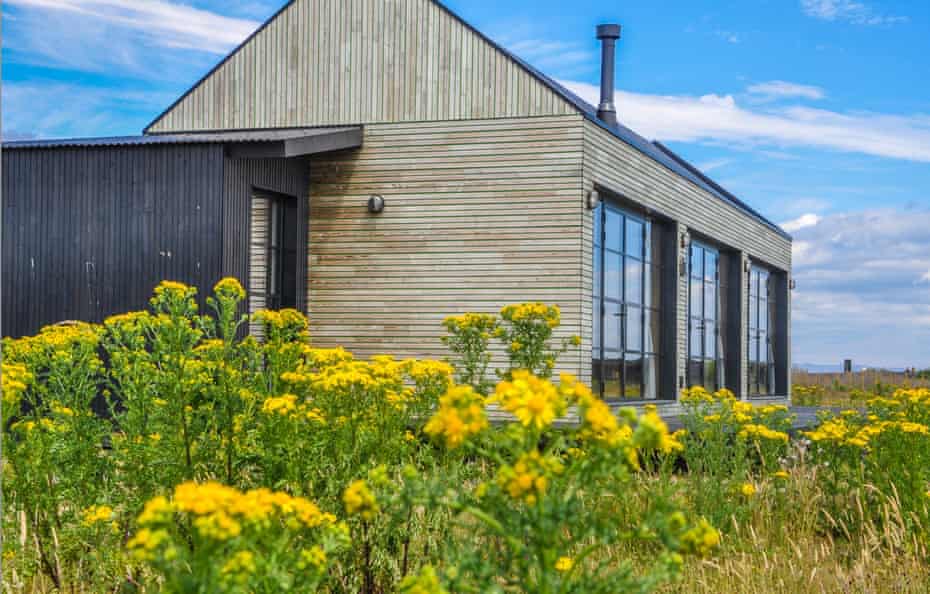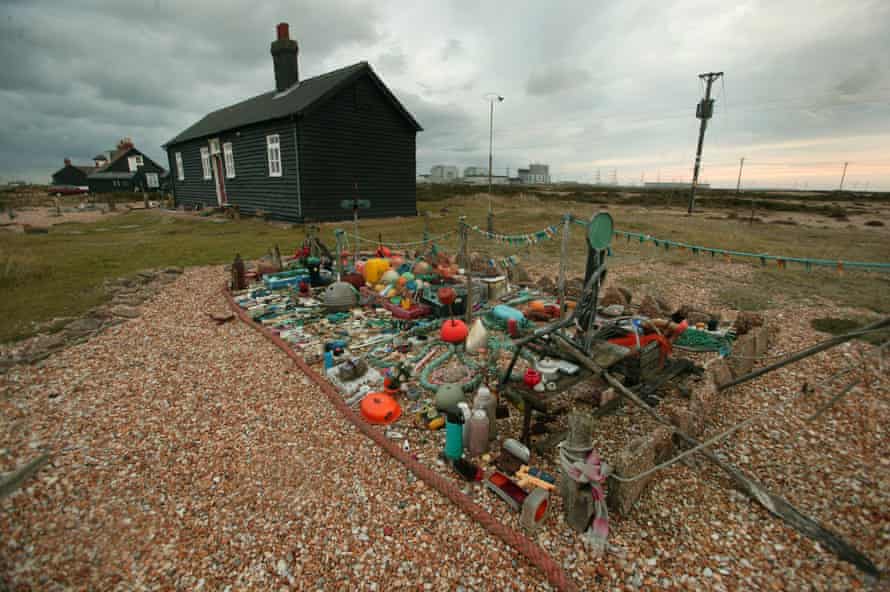“That one’s cool,” my son George points out. “The big dusty pink one in the sand dunes?” I say. “Yeah, I’d call that acid-washed burgundy,” he says.
We’re cabin-spotting on the Kent/East Sussex coast, and this blushing example on Camber Sands is the most striking example we’ve seen so far, with an asymmetrical design that complements the funky colour. As we walk closer, we see it’s only half-built and the size of a large detached house rather than a cabin.

“This one will go for two to three million – and we can’t build them quick enough,” says the builder. “The colour? It’s a microcement with a pink pigment.”
There was a growing trend for slick modern cabins before lockdown, but since the pandemic demand has gone through the elegantly curved Scandi roof. Nothing says hunker down and escape the world like a cabin.
Our quest is sparked by the fact that we’re spending the weekend in a cabin ourselves – not the dusky pink one – but at Cabü by the Sea in St Mary’s Bay, 10 miles south-west of Folkestone, which opened in 2019. There are 12 modular timber cabins of various sizes and designs on the four-hectare gated site. The setting is stark, with pebbles, thistles and marram grass pocked with rabbit warrens between the cabins, which are a pebble’s throw – over a strip of common land and sea wall – from a wide, shingle-and-sand beach. Behind us, the other side of the main road, is Romney Marsh.
Inside, it is stylishly pared back, in muted tones, with a few luxurious touches – Loaf furniture, Weaver Green cushions and big fluffy duvets (a little too warm for late summer, in fact, when we were staying). It feels both light – with floor-to-ceiling windows running the length of the building – and lounge-around-and-do-nothing cosy, even in summer. In autumn or winter, with the woodburner on and the sound of waves crashing against the sea wall, it would make a toasty bolthole. The pile of themed books on the coffee table (Cabin Porn, Tiny House, etc) is perhaps over-egging the cabin-fever motif, but George spends hours looking through them.

In fact, I can only find two faults: the joinery around the door frames is a little slapdash (though perhaps only a carpenter or a travel journalist would spot that); and, more annoyingly, a six-inch gap above the curtain rail in the main bedroom lets in enough light to wake me soon after the sun’s up.
The kitchenette has two rings and a microwave, and is equipped with four of everything for indoor eating plus another four on-trend enamel cups, plates, dishes and so on for eating on the cabin’s deck or the communal barbecue area. There’s even a cocktail shaker and martini glasses. By chance we’ve bought limes, so it seems rude not to pop over to the on-site shop for miniature bottles of tequila and Cointreau to make myself a sundowner margarita (a bucket of ice is delivered to the cabin). Cabü House (also the reception) is that kind of shop – selling treats like charcuterie, booze, local cheeses and meat and fish for the barbecue and the aforementioned cabin books alongside the essentials.

The site’s other focal point is the heated, gated, swimming pool. It could be a little warmer, but it’s long enough to swim decent lengths and shallow enough for young kids to play in. Families with little ones spend much of the day between the pool and their cabins, giving Cabü the feel of an exclusive holiday camp.
But this is a distinctive part of the world, as remote as it gets in crowded south-east of England – all sheds, shingle and sheep – so we go exploring. The vast Camber Sands is among the finest sandy beaches on the whole south coast (despite the muddy brown water); it stretches for miles and is backed by enough dunes to get lost among.
We then chug through Romney Marsh on the Romney Hythe and Dymchurch Railway miniature steam train from nearby Dymchurch to Dungeness, which is a very different kind of beach – one of the largest expanses of shingle in Europe, dotted with sea kale and red and yellow poppies. Out on a geographical limb, virtually treeless and home to the looming hulk of a nuclear power station, Dungeness feels like the end of the world.

This evocative, desert-like setting is home to perhaps England’s most famous cabin, Derek Jarman’s Prospect Cottage, originally a Victorian fishermen’s hut, and its stunning shingle garden, which the late film director created in the final years of his life. Film and garden fans crunch their way across the shingle to see it, but Dungeness has dozens more cabins to admire, from ramshackle, junk-laden shacks that wouldn’t look out place in the American midwest, to new sleek, Scandi-inspired weekend homes. There is driftwood, fishing paraphernalia and hunks of rusting metal strewn across the pebbles, and it’s hard to tell if they’re weatherworn sculptures created by the area’s large artist community or simply flotsam and jetsam.
It’s a bewitching place, quite unlike anywhere else in the UK. When we get back to our cabin, it’s no surprise to discover that Dungeness was the inspiration for Cabü itself.
The trip was provided by Cabü by the Sea; two nights from £250 in a two-berth cabin or £340 in a four-berth





